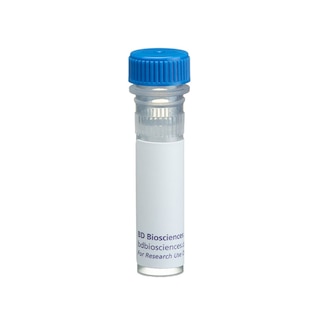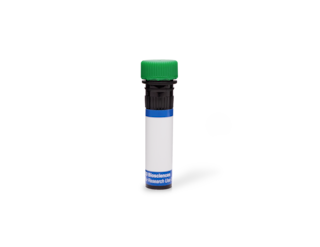-
Reagents
- Flow Cytometry Reagents
-
Western Blotting and Molecular Reagents
- Immunoassay Reagents
-
Single-Cell Multiomics Reagents
- BD® OMICS-Guard Sample Preservation Buffer
- BD® AbSeq Assay
- BD® Single-Cell Multiplexing Kit
- BD Rhapsody™ ATAC-Seq Assays
- BD Rhapsody™ Whole Transcriptome Analysis (WTA) Amplification Kit
- BD Rhapsody™ TCR/BCR Next Multiomic Assays
- BD Rhapsody™ Targeted mRNA Kits
- BD Rhapsody™ Accessory Kits
- BD® OMICS-One Protein Panels
-
Functional Assays
-
Microscopy and Imaging Reagents
-
Cell Preparation and Separation Reagents
-
- BD® OMICS-Guard Sample Preservation Buffer
- BD® AbSeq Assay
- BD® Single-Cell Multiplexing Kit
- BD Rhapsody™ ATAC-Seq Assays
- BD Rhapsody™ Whole Transcriptome Analysis (WTA) Amplification Kit
- BD Rhapsody™ TCR/BCR Next Multiomic Assays
- BD Rhapsody™ Targeted mRNA Kits
- BD Rhapsody™ Accessory Kits
- BD® OMICS-One Protein Panels
- Finland (English)
-
Change location/language
Old Browser
This page has been recently translated and is available in French now.
Looks like you're visiting us from {countryName}.
Would you like to stay on the current location site or be switched to your location?
BD Transduction Laboratories™ Purified Mouse Anti-Synaptophysin
Clone 2/Synaptophysin (RUO)

Western blot analysis of Synaptophysin on a rat cerebrum lysate (left). Lane 1: 1:25,000, lane 2: 1:50,000, lane 3: 1:100,000 dilution of the anti- synaptophysin antibody.
Immunofluorescent staining of SK-N-SH cells (right). Cells were seeded in a 384 well collagen coated Microplates (Material # 353962) at ~ 8,000 cells per well. After overnight incubation, cells were stained using the methanol fix/perm protocol (see Recommended Assay Procedure; Bioimaging protocol link) and the anti- Synaptophysin antibody. The second step reagent was Alexa Fluor® 488 goat anti mouse Ig (Invitrogen)(pseudo colored green). Cell nuclei were counter stained with Hoechst 33342 (pseudo colored blue). The image was taken on a BD Pathway™ 855 or 435 Bioimager System using a 20x objective and merged using the BD AttoVison ™ software. This antibody also stained SH-SY5Y cells using both the Triton X100 and methanol fix/perm protocols (see Recommended Assay Procedure; Bioimaging protocol link).

Western blot analysis of Synaptophysin on a rat cerebrum lysate (left). Lane 1: 1:25,000, lane 2: 1:50,000, lane 3: 1:100,000 dilution of the anti- synaptophysin antibody.
Immunofluorescent staining of SK-N-SH cells (right). Cells were seeded in a 384 well collagen coated Microplates (Material # 353962) at ~ 8,000 cells per well. After overnight incubation, cells were stained using the methanol fix/perm protocol (see Recommended Assay Procedure; Bioimaging protocol link) and the anti- Synaptophysin antibody. The second step reagent was Alexa Fluor® 488 goat anti mouse Ig (Invitrogen)(pseudo colored green). Cell nuclei were counter stained with Hoechst 33342 (pseudo colored blue). The image was taken on a BD Pathway™ 855 or 435 Bioimager System using a 20x objective and merged using the BD AttoVison ™ software. This antibody also stained SH-SY5Y cells using both the Triton X100 and methanol fix/perm protocols (see Recommended Assay Procedure; Bioimaging protocol link).



Western blot analysis of Synaptophysin on a rat cerebrum lysate (left). Lane 1: 1:25,000, lane 2: 1:50,000, lane 3: 1:100,000 dilution of the anti- synaptophysin antibody.
Immunofluorescent staining of SK-N-SH cells (right). Cells were seeded in a 384 well collagen coated Microplates (Material # 353962) at ~ 8,000 cells per well. After overnight incubation, cells were stained using the methanol fix/perm protocol (see Recommended Assay Procedure; Bioimaging protocol link) and the anti- Synaptophysin antibody. The second step reagent was Alexa Fluor® 488 goat anti mouse Ig (Invitrogen)(pseudo colored green). Cell nuclei were counter stained with Hoechst 33342 (pseudo colored blue). The image was taken on a BD Pathway™ 855 or 435 Bioimager System using a 20x objective and merged using the BD AttoVison ™ software. This antibody also stained SH-SY5Y cells using both the Triton X100 and methanol fix/perm protocols (see Recommended Assay Procedure; Bioimaging protocol link).
Western blot analysis of Synaptophysin on a rat cerebrum lysate (left). Lane 1: 1:25,000, lane 2: 1:50,000, lane 3: 1:100,000 dilution of the anti- synaptophysin antibody.
Immunofluorescent staining of SK-N-SH cells (right). Cells were seeded in a 384 well collagen coated Microplates (Material # 353962) at ~ 8,000 cells per well. After overnight incubation, cells were stained using the methanol fix/perm protocol (see Recommended Assay Procedure; Bioimaging protocol link) and the anti- Synaptophysin antibody. The second step reagent was Alexa Fluor® 488 goat anti mouse Ig (Invitrogen)(pseudo colored green). Cell nuclei were counter stained with Hoechst 33342 (pseudo colored blue). The image was taken on a BD Pathway™ 855 or 435 Bioimager System using a 20x objective and merged using the BD AttoVison ™ software. This antibody also stained SH-SY5Y cells using both the Triton X100 and methanol fix/perm protocols (see Recommended Assay Procedure; Bioimaging protocol link).

Western blot analysis of Synaptophysin on a rat cerebrum lysate (left). Lane 1: 1:25,000, lane 2: 1:50,000, lane 3: 1:100,000 dilution of the anti- synaptophysin antibody.
Immunofluorescent staining of SK-N-SH cells (right). Cells were seeded in a 384 well collagen coated Microplates (Material # 353962) at ~ 8,000 cells per well. After overnight incubation, cells were stained using the methanol fix/perm protocol (see Recommended Assay Procedure; Bioimaging protocol link) and the anti- Synaptophysin antibody. The second step reagent was Alexa Fluor® 488 goat anti mouse Ig (Invitrogen)(pseudo colored green). Cell nuclei were counter stained with Hoechst 33342 (pseudo colored blue). The image was taken on a BD Pathway™ 855 or 435 Bioimager System using a 20x objective and merged using the BD AttoVison ™ software. This antibody also stained SH-SY5Y cells using both the Triton X100 and methanol fix/perm protocols (see Recommended Assay Procedure; Bioimaging protocol link).

Western blot analysis of Synaptophysin on a rat cerebrum lysate (left). Lane 1: 1:25,000, lane 2: 1:50,000, lane 3: 1:100,000 dilution of the anti- synaptophysin antibody.
Immunofluorescent staining of SK-N-SH cells (right). Cells were seeded in a 384 well collagen coated Microplates (Material # 353962) at ~ 8,000 cells per well. After overnight incubation, cells were stained using the methanol fix/perm protocol (see Recommended Assay Procedure; Bioimaging protocol link) and the anti- Synaptophysin antibody. The second step reagent was Alexa Fluor® 488 goat anti mouse Ig (Invitrogen)(pseudo colored green). Cell nuclei were counter stained with Hoechst 33342 (pseudo colored blue). The image was taken on a BD Pathway™ 855 or 435 Bioimager System using a 20x objective and merged using the BD AttoVison ™ software. This antibody also stained SH-SY5Y cells using both the Triton X100 and methanol fix/perm protocols (see Recommended Assay Procedure; Bioimaging protocol link).




Regulatory Status Legend
Any use of products other than the permitted use without the express written authorization of Becton, Dickinson and Company is strictly prohibited.
Preparation And Storage
Product Notices
- Since applications vary, each investigator should titrate the reagent to obtain optimal results.
- Caution: Sodium azide yields highly toxic hydrazoic acid under acidic conditions. Dilute azide compounds in running water before discarding to avoid accumulation of potentially explosive deposits in plumbing.
- Sodium azide is a reversible inhibitor of oxidative metabolism; therefore, antibody preparations containing this preservative agent must not be used in cell cultures nor injected into animals. Sodium azide may be removed by washing stained cells or plate-bound antibody or dialyzing soluble antibody in sodium azide-free buffer. Since endotoxin may also affect the results of functional studies, we recommend the NA/LE (No Azide/Low Endotoxin) antibody format, if available, for in vitro and in vivo use.
- Source of all serum proteins is from USDA inspected abattoirs located in the United States.
- This antibody has been developed and certified for the bioimaging application. However, a routine bioimaging test is not performed on every lot. Researchers are encouraged to titrate the reagent for optimal performance.
- Alexa Fluor® is a registered trademark of Molecular Probes, Inc., Eugene, OR.
- Triton is a trademark of the Dow Chemical Company.
- Please refer to www.bdbiosciences.com/us/s/resources for technical protocols.
Companion Products


Synaptophysin is a major integral membrane glycoprotein that was isolated from the presynaptic vesicles of neurons. The structure of synaptophysin includes four transmembrane domains (TMD), an N-temrinal glycosylation site, nine repeats of basic tetrapeptide motifs (GYGP), multiple collagenase sensitive sites (XGP), and several collagen-type tripeptides (GXX). Synaptophysin mRNA is expressed in nervous tissues, as well as many neuroendocrine tumor cell lines. In PC12 cells and brain synaptic vesicles, synaptophysin binds cholesterol, and cholesterol depletion blocks the biogenesis of synaptic-like microvesicles. In addition, synaptophysin binds dynamin in a Ca2+-dependent manner, and injection of peptides that disrupt this interaction decreases neurotransmitter release during high-frequency stimulation of squid neurons. This decrease in neurotransmitter release results from inhibition of synaptophysin-dependent vesicle retrieval. Thus, synaptophysin may have important roles in the biogenesis and recycling of synaptic vesicles. Synaptophysin is an integral membrane glycoprotein with a calculated molecular weight of 33 kD, but has been reported to be observed at 38-42 kD due to glycosylation.
Development References (3)
-
Daly C, Sugimori M, Moreira JE, Ziff EB, Llinas R. Synaptophysin regulates clathrin-independent endocytosis of synaptic vesicles. Proc Natl Acad Sci U S A. 2000; 97(11):6120-6125. (Biology). View Reference
-
Leube RE, Kaiser P, Seiter A. Synaptophysin: molecular organization and mRNA expression as determined from cloned cDNA. EMBO J. 1987; 6(11):3261-3268. (Biology: Western blot). View Reference
-
Thiele C, Hannah MJ, Fahrenholz F, Huttner WB. Cholesterol binds to synaptophysin and is required for biogenesis of synaptic vesicles. Nat Cell Biol. 2000; 2(1):42-49. (Biology). View Reference
Please refer to Support Documents for Quality Certificates
Global - Refer to manufacturer's instructions for use and related User Manuals and Technical data sheets before using this products as described
Comparisons, where applicable, are made against older BD Technology, manual methods or are general performance claims. Comparisons are not made against non-BD technologies, unless otherwise noted.
For Research Use Only. Not for use in diagnostic or therapeutic procedures.